The results shown in figures 7-19 - 7-28 are all for waves
with ![]() ,
, ![]() and
and ![]() .
.

Figure 7-19: The frequency ![]() as a function of the density ratio f
when
as a function of the density ratio f
when ![]() is fixed,
is fixed, ![]() and
and ![]() . The solid
lines are the theoretical curves.
. The solid
lines are the theoretical curves.
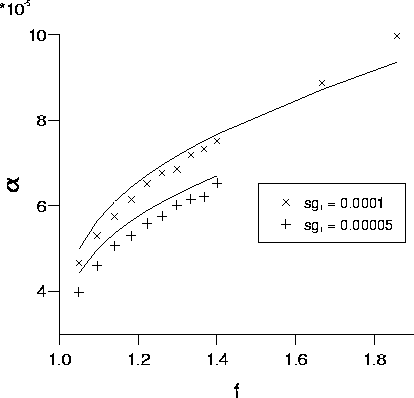
Figure 7-20: The damping parameter ![]() as a function of
the density ratio f
when
as a function of
the density ratio f
when ![]() is fixed,
is fixed, ![]() and
and ![]() . The solid
lines are the theoretical curves.
. The solid
lines are the theoretical curves.

Figure 7-21: The frequency ![]() as a function of the density ratio f
when the gravitational acceleration g is fixed,
as a function of the density ratio f
when the gravitational acceleration g is fixed, ![]() and
and ![]() . The solid
lines are the theoretical curves.
. The solid
lines are the theoretical curves.

Figure 7-22: The damping parameter ![]() as a function of
the density ratio f
when the gravitational acceleration g is fixed,
as a function of
the density ratio f
when the gravitational acceleration g is fixed, ![]() and
and ![]() . The solid
lines are the theoretical curves.
. The solid
lines are the theoretical curves.
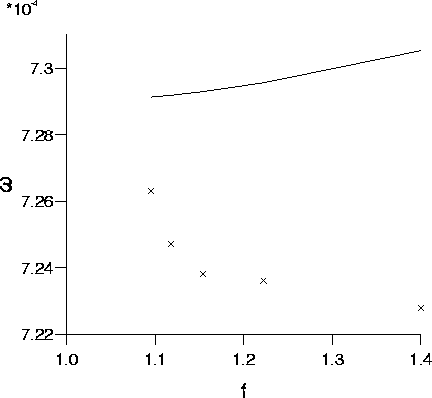
Figure 7-23: The frequency ![]() as a function of the density ratio f
when the density difference is fixed by
as a function of the density ratio f
when the density difference is fixed by ![]() and
and ![]() . The solid
line is the theoretical curve.
. The solid
line is the theoretical curve.
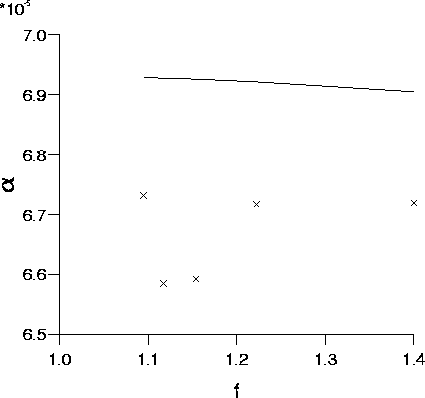
Figure 7-24: The damping parameter ![]() as a function of
the density ratio f
when
as a function of
the density ratio f
when ![]() and
and ![]() . The solid
line is the theoretical curve.
. The solid
line is the theoretical curve.
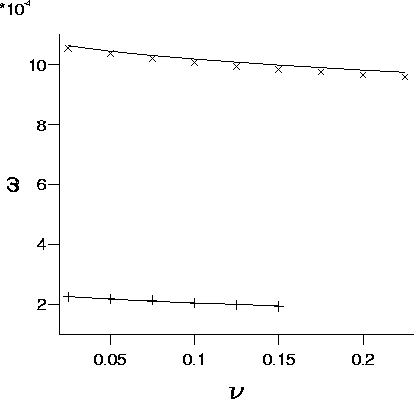
Figure 7-25: The frequency ![]() as a function of the viscosity
as a function of the viscosity ![]() .
The results are for
.
The results are for ![]() and
and
![]() . The wavelength
is
. The wavelength
is ![]() .
The solid
lines are the theoretical curves.
.
The solid
lines are the theoretical curves.
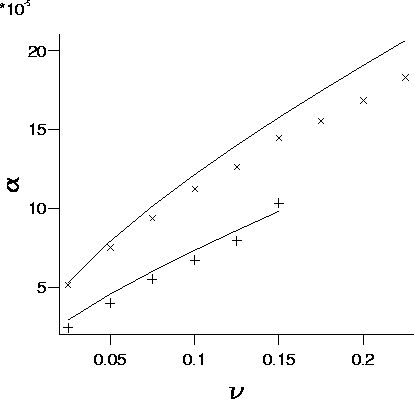
Figure 7-26: The damping parameter ![]() as a function of
the viscosity
as a function of
the viscosity ![]() .
The results are for
.
The results are for ![]() and
and
![]() . The wavelength
is
. The wavelength
is ![]() .
The solid
lines are the theoretical curves.
.
The solid
lines are the theoretical curves.
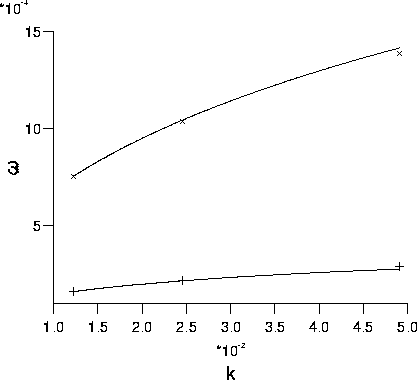
Figure 7-27: The frequency ![]() as a function of the wavenumber k.
The results are for
as a function of the wavenumber k.
The results are for ![]() and
and
![]() The viscosity
is
The viscosity
is ![]() .
The solid
lines are the theoretical curves.
.
The solid
lines are the theoretical curves.
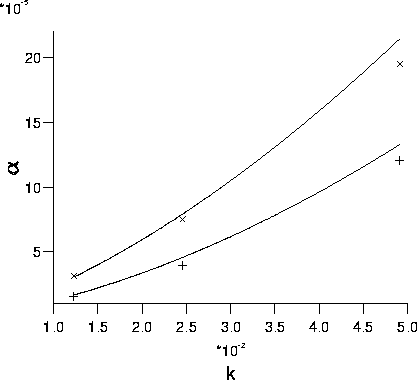
Figure 7-28: The damping parameter ![]() as a function of the
the wavenumber k.
The results are for
as a function of the
the wavenumber k.
The results are for ![]() and
and
![]() . The viscosity
is
. The viscosity
is ![]() .
The solid
lines are the theoretical curves.
.
The solid
lines are the theoretical curves.
The solid lines are the theoretical values calculated from
equations (6.15), (6.16), (6.43) and (6.44).
In figures 7-19 and 7-20 the parameter ![]() was fixed
while
was fixed
while ![]() was varied to give different values of f.
The viscosity and the wavelength were fixed at 0.05 and 256 respectively.
The results are for
was varied to give different values of f.
The viscosity and the wavelength were fixed at 0.05 and 256 respectively.
The results are for
![]() and
and ![]() .
The results in figures 7-21 and 7-22 are for
.
The results in figures 7-21 and 7-22 are for
![]() and
and ![]() with
with ![]() and
and
![]() where the density ratio f is varied.
Figures 7-23 and 7-24 have
where the density ratio f is varied.
Figures 7-23 and 7-24 have
![]() .
The viscosity and the wavelength were again fixed at 0.05 and 256 respectively.
Figures 7-25 and {7-26 are for
.
The viscosity and the wavelength were again fixed at 0.05 and 256 respectively.
Figures 7-25 and {7-26 are for
![]() and
and
![]() .
The wavelength is
.
The wavelength is ![]() .
Figures
7-27 and 7-28 are also for
.
Figures
7-27 and 7-28 are also for
![]() and
and
![]() when the
viscosity is fixed at
when the
viscosity is fixed at ![]() .
.
In each case there is reasonable agreement between the results and the theory.
When ![]() and
and ![]() the results found for the frequency are, in general,
about 1% smaller
than the theoretical predictions while the results for
the results found for the frequency are, in general,
about 1% smaller
than the theoretical predictions while the results for ![]() are, on average, about 4% smaller. This is particularly noticeable
in figures 7-23 and 7-24 where there is little
variation in
are, on average, about 4% smaller. This is particularly noticeable
in figures 7-23 and 7-24 where there is little
variation in ![]() and
and ![]() over the range of results.
The results in figure 7-26 show a greater departure between the theory
and the simulations for larger values of the viscosity, this can also be
seen to a much lesser extent in figure 7-25.
The results in figures 7-27 and 7-28 also show a larger
difference between the theory and the simulations when
over the range of results.
The results in figure 7-26 show a greater departure between the theory
and the simulations for larger values of the viscosity, this can also be
seen to a much lesser extent in figure 7-25.
The results in figures 7-27 and 7-28 also show a larger
difference between the theory and the simulations when
![]() (k = 0.05).
As before the difference is greater for the damping parameter
then it is for the frequency. Thus, for small
(k = 0.05).
As before the difference is greater for the damping parameter
then it is for the frequency. Thus, for small ![]() and small k,
the regime where equations (6.43) and (6.44) can
be applied, there is good agreement
between the results and the theory. For larger values of the viscosity and
the wavenumber there are larger discrepancies however the theory is
less accurate for these values since higher-order terms
will become significant.
The difference observed for
and small k,
the regime where equations (6.43) and (6.44) can
be applied, there is good agreement
between the results and the theory. For larger values of the viscosity and
the wavenumber there are larger discrepancies however the theory is
less accurate for these values since higher-order terms
will become significant.
The difference observed for ![]() and
and ![]() between the computational
results and the theory, where
between the computational
results and the theory, where ![]() and k are small, was found
to be about 1% and 4% respectively. These
are slightly larger than the 0.3% and 4%
errors predicted in section 7.4.1. Here, however, the
fitted parameters are always smaller then their theoretical values. This
might suggest that there is some bias in the fitting routine.
No evidence
of this was found when it was tested
in section 7.4.1. The differences
are nevertheless small and the comparison is good.
and k are small, was found
to be about 1% and 4% respectively. These
are slightly larger than the 0.3% and 4%
errors predicted in section 7.4.1. Here, however, the
fitted parameters are always smaller then their theoretical values. This
might suggest that there is some bias in the fitting routine.
No evidence
of this was found when it was tested
in section 7.4.1. The differences
are nevertheless small and the comparison is good.